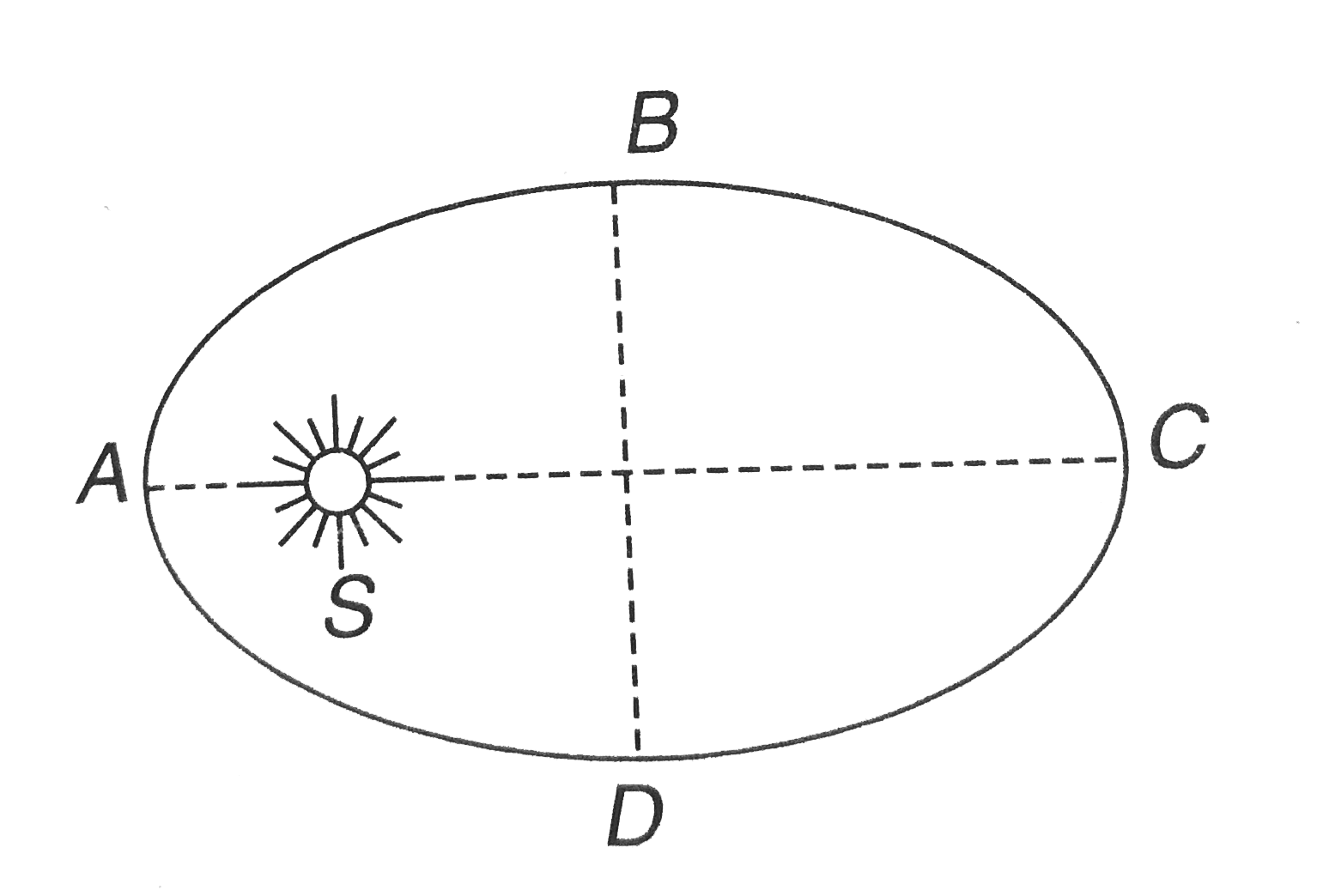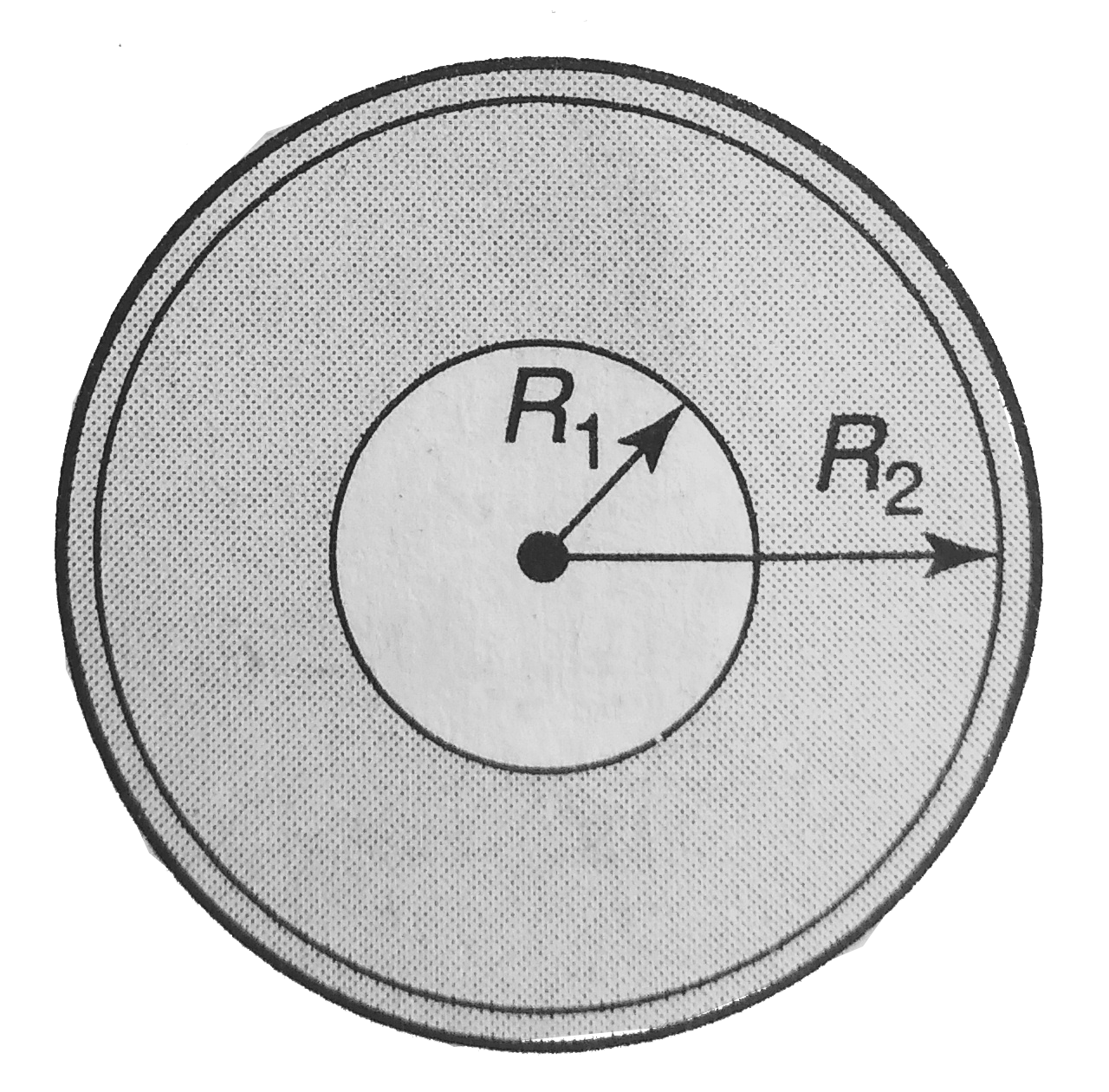Complete Solutions to Kepler'S Laws Of Planetary Motion And Newton'S Law Of Gravitation of chapter GRAVITATION of Class 11 book with complete answers and questions
| Class 11 | PHYSICS |
| Chapter | GRAVITATION |
| A2Z | Kepler'S Laws Of Planetary Motion And Newton'S Law Of Gravitation |
| Number Of Questions | 33 |
| Academic Year | 2023-24 |
Kepler's second law is a consequenc of
View SolutionThe aeral velocity and the angular moementum of the planet are related by which of the following relationos? (where `m_(p)` is the same mass of the planet)
View SolutionWhich of the following orbits is a possible orbit for a planet?
View SolutionWhich physical quantity is conserved when a planet revolves around the sun ?
View SolutionWhich of the following graphs represents the motion of the planet moving about the Sun. T is the periode of revolution and r is the average distance (from centre to centre) between the sun and the planet
View SolutionA planet is revolving around the sun as shown in elliptical path. The correct option is

View SolutionIn the previous question, the orbit velocity of the planet will be miniumu at
View SolutionIn our solar system, the inter-planetery region has chunks of matter (much smaller in size compared to planets) called asteriods. They
View SolutionA saturn year is 29.5 times the earth year. How far is the saturn from the sun if the earth is `1.5xx10^(8)` away from the sun?
View SolutionIf a graph is plotted between `T^(2)` and `r^(3)` for a planet, then its slope will be be (where `M_(S)` is the mass of the sun)
View SolutionThe period of moon's rotation around the earth is approx. 29 days. IF moon's mass were 2 fold its present value and all other things remain unchanged, the period of Moon's rotation would be nearly
View SolutionWhich of the following statements is correct regarding the gravitational force?
View SolutionTwo sphere of masses `m` and `M` are situated in air and the gravitational force between them is `F`. The space around the masses in now filled with a liquid of specific gravity `3`. The gravitational force will now be
View SolutionThe mass of moon 1% of mass of earth. The ratio of gravitational pull of earth on moon and that of moon on earth will be
View SolutionIf earth stands still what will be its effect's on man's weigh
View SolutionTwo sphere of masses `m` and `M` are situated in air and the gravitational force between them is `F`. The space around the masses in now filled with a liquid of specific gravity `3`. The gravitational force will now be
View SolutionA point mass m is placed inside a spherical shell of radius R and mass M at a distance `R/2` form the centre of the shell. The gravitational force exerted by the shell on the point mass is
View SolutionThe figure shows four arrangement of three particles of equal masses. Rank the arrangement according to the magnitude of the net gravitational force on the particle m, greatest first.

View SolutionIn the arrangement 2 of previous problem, the direction of the net force is
View SolutionIn planetary motion the areal velocity of position vector of a planet depends of angular velocity `(omega)` and the distance of the planet from sun (r). If so the correct relation for areal velocity is
View SolutionThe maximum and minimum distance of a comet form the sun are `8xx10^(12)m and 1.6xx10^(12)m`. If its velocity when nearest to the sun is `60m//s`, what will be its velocity in m/s when it is farthest
View SolutionThree masses, each equal to M, are placed at the three corners of a square of side a. the force of attraction on unit mass at the fourth corner will be
View SolutionThree identical point mass each of mass 1kg lie in the x-y plane at point (0,0), (0,0.2m) and (0.2m, 0). The net gravitational force on the mass at the origin is
View SolutionFour particles having masses, m, 2m, 3m, and 4m are placed at the four corners of a square of edge a. Find the gravitational force acting on a particle of mass m placed at the centre.
View SolutionA satellite A of mass m is at a distance of r from the centre of the earth. Another satellite B of mass 2m is at distance of 2r from the earth's centre. Their time periode are in the ratio of
View SolutionA planet is revolving around the Sun in an elliptical orbit. Its closest distance from the Sun is `r` and farthest distance is `R`. If the orbital velocity of the planet closest to the Sun is `v`, then what is the velocity at the farthest point?
View SolutionImagine a light planet revolving around a very massive star in a circular orbit of radius R with a period of revolution T. If the gravitational force of attraction between the planet and the star is proportional to `R^(-5//2)`, then
(a) `T^(2)` is proportional to `R^(2)`
(b) `T^(2)` is proportional to `R^(7//2)`
(c) `T^(2)` is proportional to `R^(3//3)`
(d) `T^(2)` is proportional to `R^(3.75)`.
View SolutionTwo point masses A and B having masses in the ratio `4:3` are separated by a distance of 1m. When another point mass C of mass M is placed in between A and B, the force between A and C is `(1/3)^(rd)` of the force between B and C. Then the distance C from A is
View SolutionA research satellite of mass `200 kg` circles the earth in an orbit of average radius `3 R//2`, where `R` is the radius of the earth. Assuming the gravitational pull on the mass of `1 kg` on the earth's surface to be `10 N`, the pull on the satellite will be
View SolutionAs observed from the earth, the sun appears to move an approx. circular orbit. For the motion of another planet like mercury as observed from the earth, this would
View SolutionA sphere of mass M and ` radius R_(2) ` has a concentric cavity of radius ` R_(1) ` as shown in figure The force F exerted by the sphere on a particle of mass m located at a distance r from the centre of sphere veries as `(0 lerleoo)` .

View Solutionparticles of masses 2M m and M are resectively at points A , B and C with ` AB = (1)/(2) (BC)` m is much - much smaller than M and at time ` t=0` they are all at rest as given in figure . As subsequent times before any collision takes palce .

View Solutionparticles of masses 2M m and M are resectively at points A , B and C with ` AB = (1)/(2) (BC)` m is much - much smaller than M and at time ` t=0` they are all at rest as given in figure . As subsequent times before any collision takes palce .

View Solution
Kepler'S Laws Of Planetary Motion And Newton'S Law Of Gravitation questions and complete solutions for chapter GRAVITATION of A2Z PHYSICS (HINGLISH) of Class 11